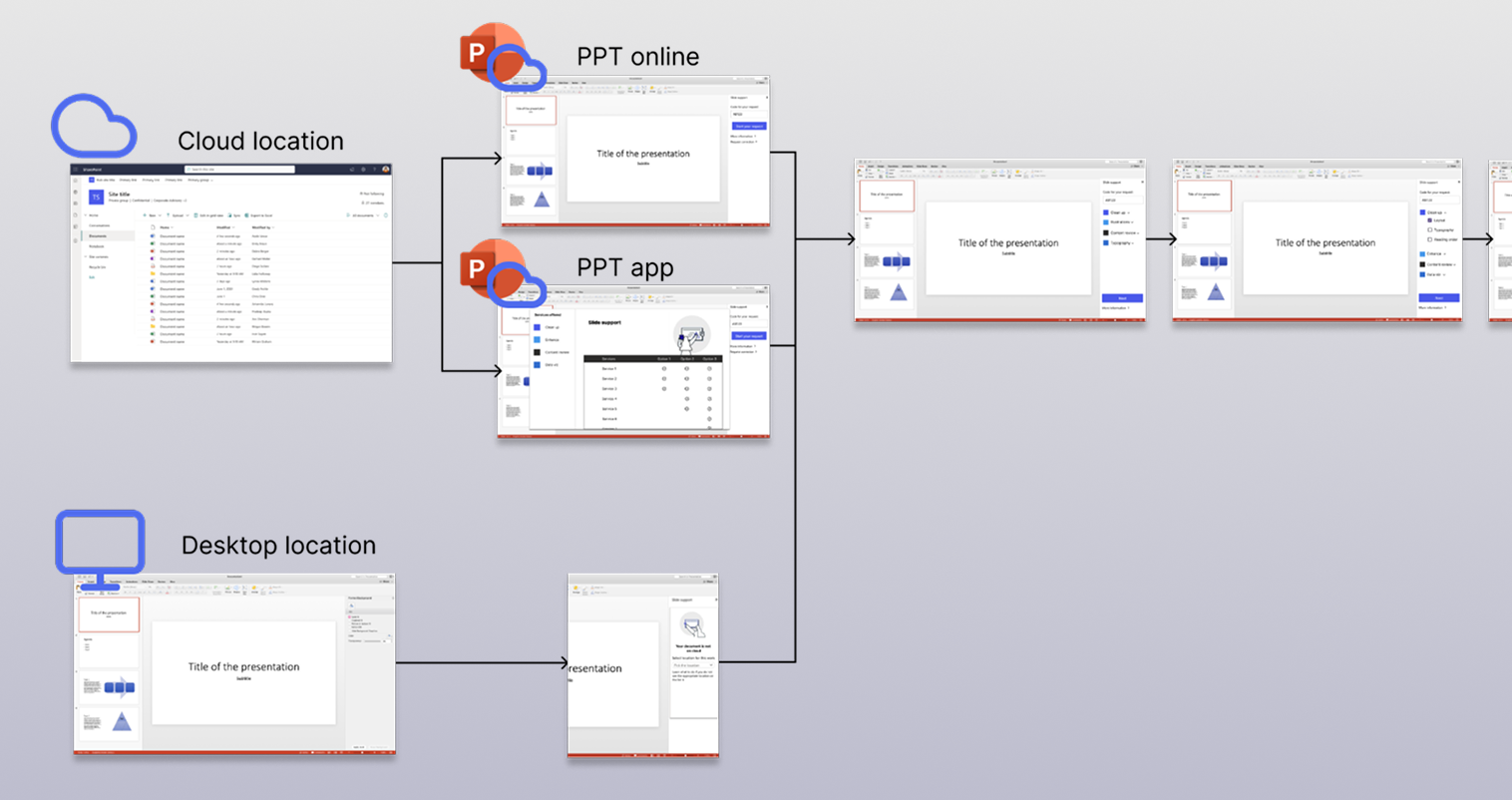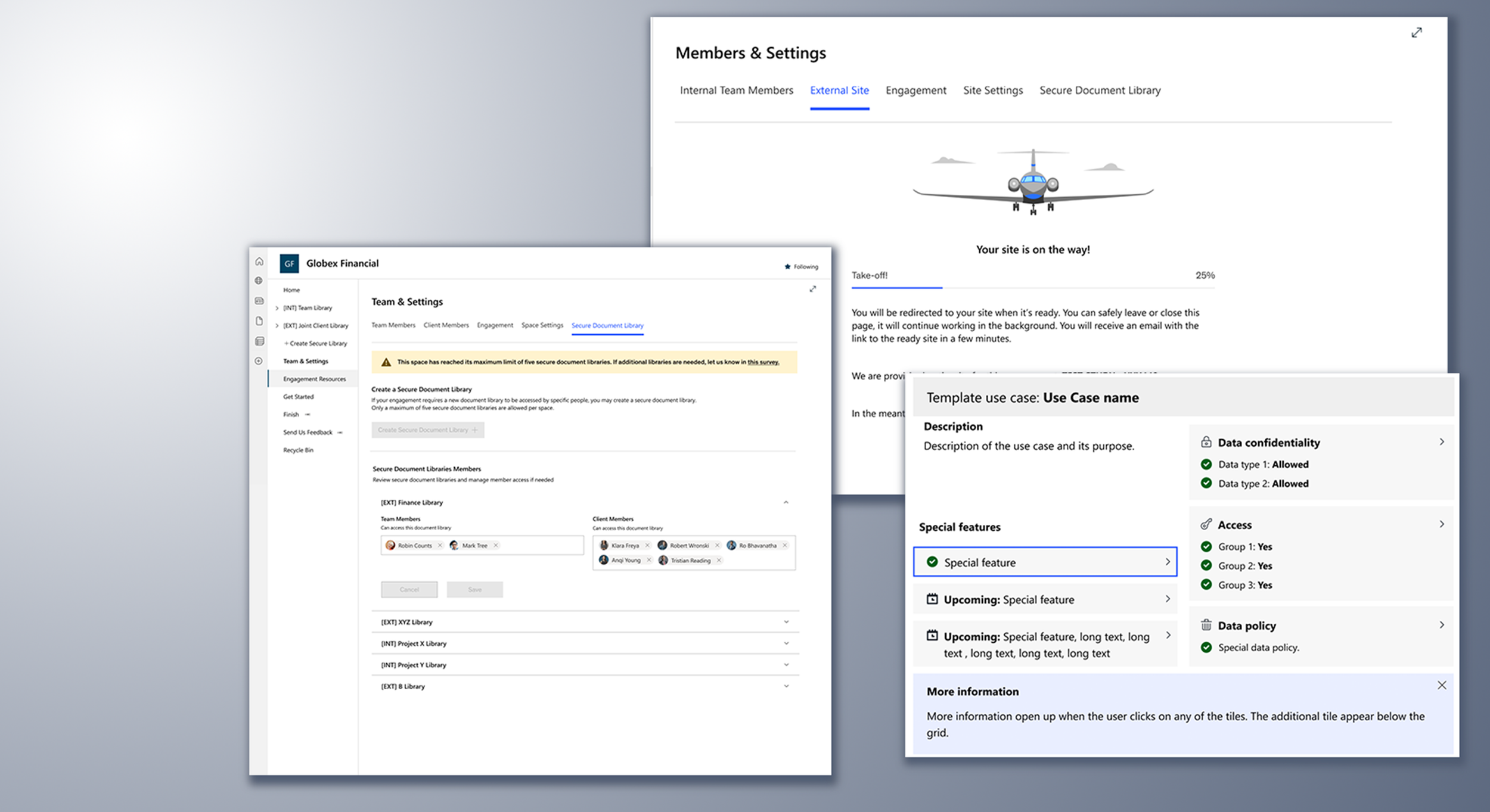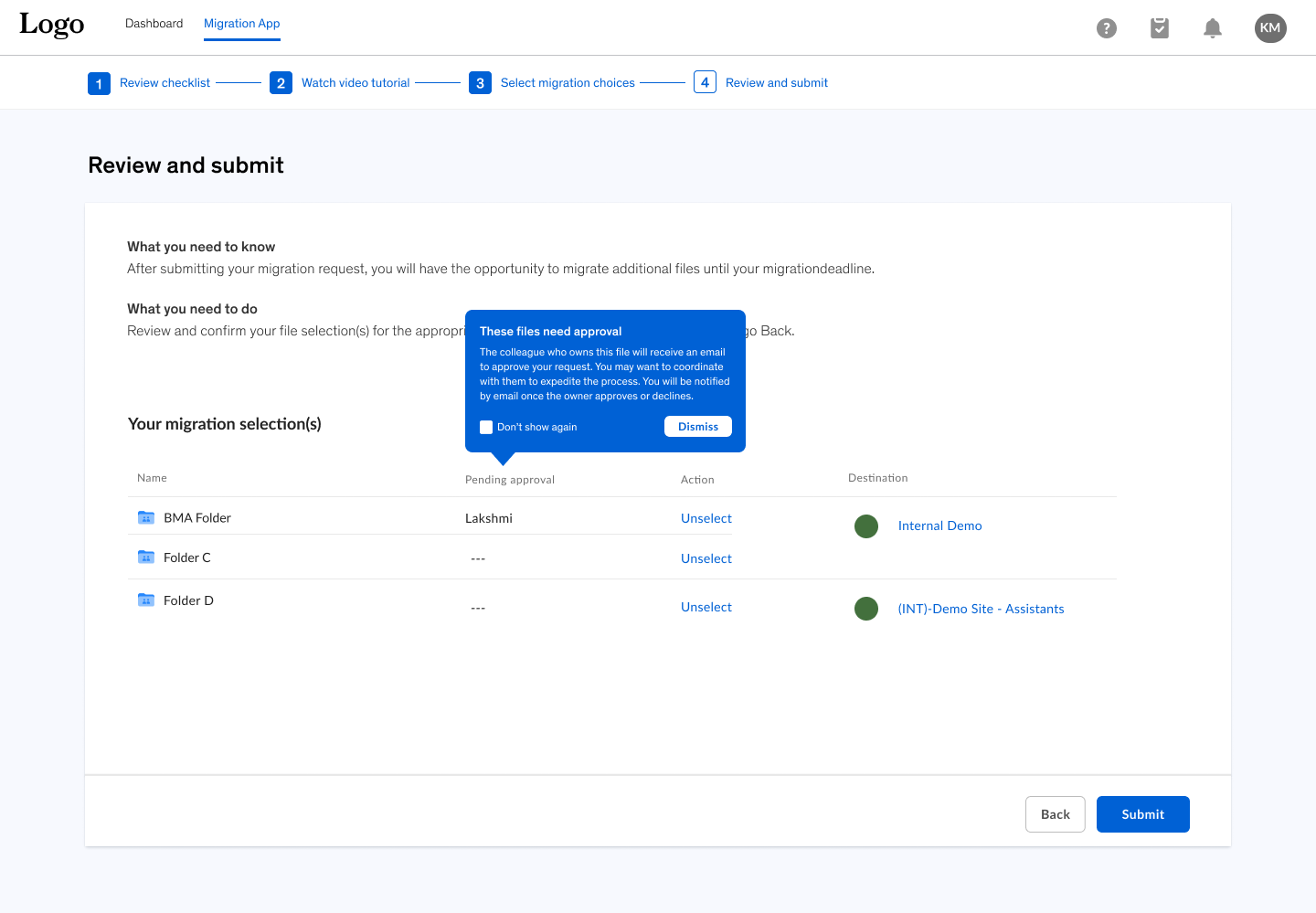Using system thinking to design interactions and applications
Year: 2024 / Company: McKinsey & Company
Details and examples limited or changed to comply with the non disclosure character of the work.
Areas of expertise:
Service Design, UX Strategy, User Research
Most utilized skills:
Problem Solving facilitation, Navigating ambiguity
My role:
I initiated the project, led and facilitated the mapping. I worked with Product Managers, leadership, support, adoption and research teams.
By created alignment between teams we improved user experience.
Organization was shifting from a legacy file-sharing tool to a comprehensive enterprise collaboration platform. The initiative impacted internal operations, employee workflows, client collaboration, and service delivery across the Firm.
I joined the transformation program as Lead Service Designer to ensure a seamless user and organizational experience during this transition.
Challenge
Lack of understanding of the whole experience journey led to areas which were missed out.
Despite shared goals, I observed misaligned approaches, gaps in responsibilities, and inconsistent messaging—resulting in confusion and inefficiencies across teams and users.
The change involved five interdependent workstreams:
A sunsetting legacy product team
Two new platform product teams
A migration team
An adoption and communications team
Sunsetting product
team
New product team
Client work
New product team
Internal work
Migration team
Adoption team
Approach
Zooming out in order to zoom out
I initiated the creation of a comprehensive journey map to align teams, clarify roles, and improve the end-to-end experience.
Worked with program leadership to define shared objectives
Facilitated cross-functional alignment sessions
Navigated sensitive conversations across global stakeholders
Visualized the full migration journey, touchpoints, and dependencies
This systems-level view enabled informed decision-making and surfaced structural breakdowns that had previously gone unnoticed.
Experience mapping — Designing the custom service blueprint to address group’s needs
Outcome
The project resulted not only in more clarity around the experience journey but also initiated the design of the new products and solutions.
Enabled coordinated delivery across five major workstreams
Created a scalable governance model for future transformations
Significantly reduced user confusion and support burden during migration
Accelerated change readiness and time-to-adoption across global teams
Examples of the identified gaps and designed solutions
Gap:
Users are unsure which type of storage space to use in the new tool.
Solution:
Due to its cross-functional nature the gap was addressed as a collaborative project between two teams, resulting in a provisioning process design with clearly defined use cases.
Use case information widget for provisioning design
Gap:
Users are unsure where to move their files. They are confused about what can be stored on the desktop versus in cloud-shared spaces.
Solution:
This issue was addressed by working with the learning team to create a training module. We also included relevant information in the migration app and communicated it at launch.
Modal added to the Migration App, prompting users to consider the best storage location for their files
Gap:
Users do not know whom they can reach out to for help with migration within their groups at the Firm.
Solution:
The issue was resolved by establishing a new role of the migration leader within teams. We also designed checklists for different personas involved in the migration.









